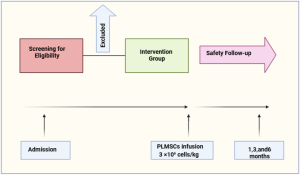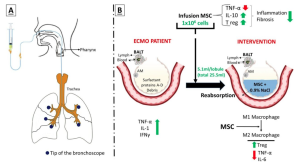Researchers have discovered one of the reasons why more than 50 per cent of people with type 2diabetes die from heart disease. And perhaps more significantly, they have found a way to treat it.
University of Otago researchers have discovered one of the reasons why more than 50per cent of people with type 2 diabetes die from heart disease.
And perhaps more significantly, they have found how to treat it.
Associate Professor Rajesh Katare, of the Department of Physiology, says it has been known that stem cells in theheart of diabetic patients are impaired. While stem cell therapy has proved effective in treating heart disease, it isnot the case in diabetic hearts.
It has not been known why; until now.
It comes down to tiny molecules called microRNA which control gene expression.
“Based on the results of laboratory testing, we identified the number of microRNAs that are impaired in stem cellsof the diabetic heart,” Associate Professor Katare says.
“Among several microRNAs we identified that one particular microRNA called miR-30c — which is crucial for thestem cells’ survival, growth and new blood vessel formation — is reduced in the diabetic stem cells. All thesefunctions are required for stem cell therapy to be successful in the heart.
“Importantly, we also confirmed that this microRNA is decreased in the stem cells collected from the heart tissue ofthe patients undergoing heart surgery at Dunedin Hospital.”
Researchers were able to then increase the level of the lacking miR-30c in the heart by a “simple injection.”
“This resulted in significantly improving the survival and growth of stem cells in the diabetic heart,” AssociateProfessor Katare says.
“This fascinating discovery has newly identified that impairment in the microRNAs is the underlying reason for thestem cells being not functional in the diabetic heart. More importantly, the results have identified a novel therapyfor activation of stem cells in the heart using microRNA, without the need to inject stem cells, which is a time andcost consuming process.”
Associate Professor Katare calls the finding “significant” and says it could help diabetes- sufferers — who are tenper cent of New Zealanders — lead a longer, quality life.
“Apart from identifying the reasons for poor stem cells function in a patient with diabetes, the novel therapy ofusing microRNA could change the treatment method for heart disease in diabetic individuals.”
Researchers will now undertake more laboratory testing before moving on to humans.
“Our initial analysis revealed that there might be another four potential candidate microRNAs. Therefore, it isessential to test the function of those microRNAs as well. It may be possible that combination therapy with morethan one microRNA could further increase the beneficial effects.”
Reference:
Nima Purvis, Sweta Kumari, Dhananjie Chandrasekera, Jayanthi Bellae Papannarao, Sophie Gandhi, Isabellevan Hout, Sean Coffey, Richard Bunton, Ramanen Sugunesegran, Dominic Parry, Philip Davis, Michael J. A.Williams, Andrew Bahn, Rajesh Katare. Diabetes induces dysregulation of microRNAs associated with survival, proliferation and self-renewal in cardiac progenitor cells. Diabetologia, 2021; DOI:10.1007/s00125-021-05405-7
Source: Đại học Otago








